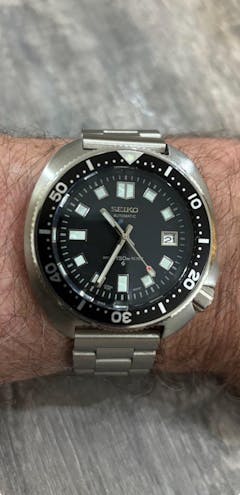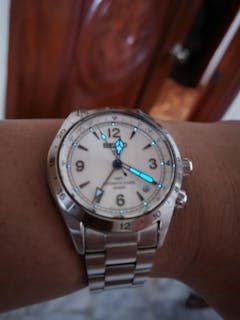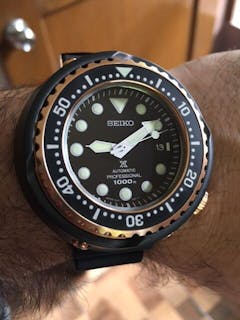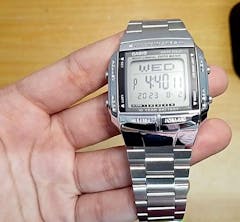Casio G-Shock
The G-Shock was conceptualised in 1981 by a Casio engineer when he accidentally dropped a pocket watch gifted to him by his father thus breaking it. The G-Shock was conceived as a watch which would have triple 10 resistance, meaning it would have a battery life of 10 years, have a water resistance of 10 bar and could survive a fall of 10 meters.
A team of three individuals was selected by Ibe which was known as "team tough". The team had assembled and tested nearly 200 prototypes but were still not able to achieve the conception criteria. During a visit to a playground, Ibe discovered that in a rubber ball, the centre of the ball doesn't suffer the effects of the shock during a bounce on a rough surface which gave him the idea to implement that concept into the watch. With that in mind, the team set out to develop a watch using such a concept and in 1983, the first G-Shock: the DW-5000C was launched.
The shock-resistant design on the original G-Shock has 10 layers protecting the quartz timekeeping module, including a urethane rubber bumper, the stainless steel case, the hardened mineral glass watch crystal, the stainless steel screwed down caseback, and the "floating module" where the quartz mechanism floats free in a urethane foam cradle, with the outer buttons and LCD module attached with flexible cables. The strap of the watch is also designed to protect the module during a fall.
Casio released the G-Shock in April 1983, to fill the demand for durable watches. Sales were sluggish in Japan as people preferred dress watches. In order to promote the G-Shock worldwide, the American division of Casio released a commercial in which an ice hockey player used the DW-5000C as a hockey puck to demonstrate the toughness of the watch. The commercial gained negative publicity and Casio was accused of false advertising. A TV news channel then set out to conduct live tests on the DW-5000C to check whether it was as tough and durable as advertised. This involved repeating the action shown in the commercial. The DW-5000C survived the impact of the hockey stick and the G-Shock gained popularity among the general public. The popularity of G-Shocks increased throughout the 1990s. By 1998, Casio had released more than 200 different G-Shock models, with worldwide sales at 19 million units.
On December 12, 2017, the G-Shock earned the Guinness World Record for the heaviest vehicle to drive over a watch. The officials from Guinness World Record drove a 24.97 ton truck over the Casio G-Shock DW5600E-1. The G-Shock is the first watch by any company being able to withstand the challenge.
















